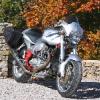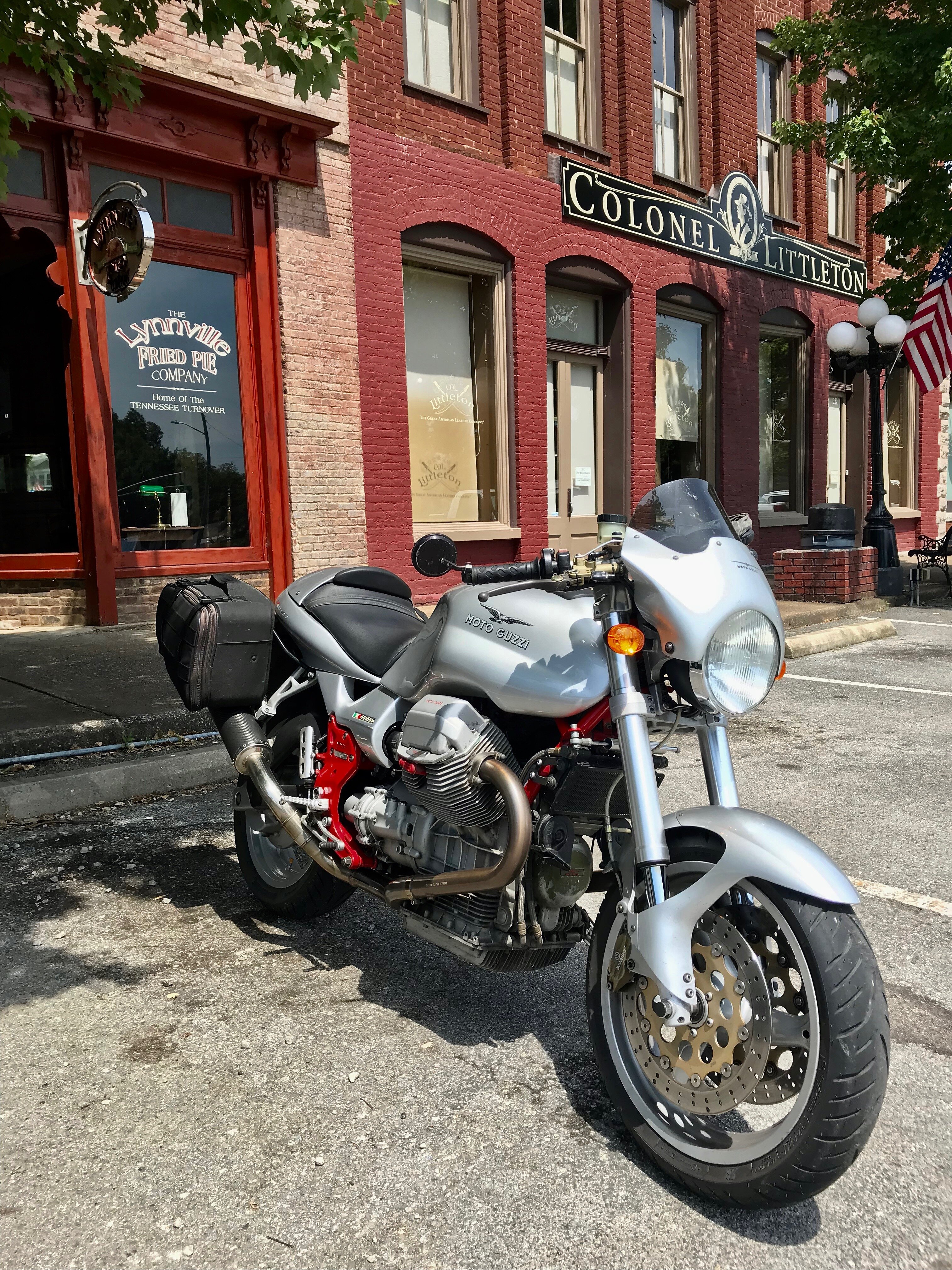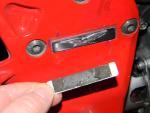-
Posts
20,492 -
Joined
-
Last visited
-
Days Won
1,188
Content Type
Profiles
Forums
Events
Gallery
Community Map
Everything posted by docc
-
Let's ask the other inmates on the ward if it's crazy to keep all your bikes . . .
-

Off to see the wizard...
docc replied to audiomick's topic in Special place for banter and conversation
I love this plan! Bon voyage (however an Aussie might say that . . . ) -
Sounds like y'all had a great Nashville visit! For matters of clarification (Your Moderator's presumed function ), said "Mountain Dew" may or may not refer to the PepsiCo product depicted, although originally formulated by Tennessee bottlers in 1940. The lyrical reference may run deeper (into the surrounding hills and hollers) . . .
-
Agreed. In this way, you can see what rpm the ECU (map) is seeing, and know what your specific correction value is to what the tachometer displays. The accuracy of my Speedhut conversions has spoiled me, though . . .
-
Yes, the injected 1100 Sport-i would have at least one more relay than the earlier, carburetted, SPOrT 1100. The V11 has separate relays for the ECU and FI/coils. Plus the Start Relay and the "Headlight" Relay that handles pretty much everything besides the FI/ECU. The fifth (middle/#3) relay of the V11 Sport/LeMans is the "Sidestand"/ Neutral Relay. Not sure how the 1997 1100 Sport-i handles that function (preventing start-up in gear with the sidestand down).
-
-
Always so great to see you guys! It occurs to me that if the bikes showed up, with no Spine Raiders, there would be no Spine Raid. Yet, even if the Spine Raiders showed up with no bikes, it would still be a Spine Raid!
-
I had a minor vacuum leak at one of the taps that gave me a fit before finding it. Similar fits when the rubber caps had cracked and loosened on the taps. For a time, I used shortened bolts to block the vacuum access, but one time the threads pulled out and I went back to the taps with silicone caps.
-
Fine to cap the intake taps and see if it changes your issue. I finally sourced silicone caps that hold up much better to the heat cycling and fuel exposure. With the tank off, you can "T" the tank vent and overflow together to route an exit behind the rear of the sump. I loosely zip-tie mine to the fitting for the oil evap return line. At some point, my funky, old tub-of-a-Sport started leaving a puddle on the lift, so I added a spooge catcher. I've never seen anyone devalue a V11 that was without the evap mess. When I pulled mine off the early Sport with dual canisters in the underseat tool tray, I found there was twenty (20!) feet of 1/2" US fuel line and the mess weighed five pounds. Of course, I saved it in the cabinet full of Sport stuff.
-
Eight weeks out. Changed engine and gearbox oil, Decent Tune-up, and addressed some niggles. Pondering matters of tires . . . [edit/46 minutes later: "pondering" turned into a fresh set of Pirelli Angel GT on the way . . . ]
-
Taking a closer look at the Workshop Manual, the degrees opening of the throttle plate at idle is 3,6º +/- 0,5º (3.1º - 4.1º). The corresponding mV I have written in the margin for this range is 5.10 - 5.38 mV. Pretty sure I got this from Ed Milch very early on. The Workshop Manual states this setting should yield an idle of 1050 +/-50 rpm and that, if it doesn't, to set the TPS to 150mV +/- 15. First of all, that is a ridiculously wide range for the TPS baseline (135 - 165 mV). I ran mySport at the top end of that range back in the early days and it does not run well (thinking, at the time, "I'll just add more fuel by turning up the TPS.") Certainly, the best results indexing the mechanical throttle position to the mapping is to baseline as close to 157mV as possible and balance the throttle bodies at "some" rpm. Accounting for my worn throttle shafts (and bores and plates), I used this (rather intimate) method to hold the throttle plate closed after pressing the bottom of shaft toward the other throttle body, along the axis of the throttle connection rod. Out for a shakedown ride after the throttle body balancing, she seems quite happy with the outcome . . . Idle preference is another matter. Once all tuning parameters are addressed (including setting the CO Fuel Trim, which cannot be overlooked), put your idle wherever you and your V11 are happiest. In these high ambient temperatures (90-95ºF/ 32-35ºC), and owing to my well worn flywheel teeth and gearbox input hub teeth, I prefer my idle toward the 1500 rpm mark; much less rattle at idle, more stable if stuck in traffic, and more oil for cooling, methinks. [Just a quick reminder that the factory tachometers, especially the early white-face Vague-liar are known to read up to 300-500 rpm high. In the event the tach is used to set the idle at 1000 rpm (1050 minus 50), the poor thing is trying to stay alive idling at 500-700 rpm. ]
-
The recurring take-away regarding "manufacturers' recommendations" : Due to the increasingly stringent approval regulations . . . This is certainly the case with reduced zinc and phosphorous (ZDDP) considered desirable for our flat tappet engines. The matter of PAO and ester base oils being obscured has much to do with what oil manufacturers can get by with (cheaper, easier to source base oils) while still marketing, and charging for, a "synthetic" product. A couple things I learned from well informed other sources about the desirability of pure (group 4 group 5) is vastly improved shear resistance (stable viscosity over the service life) and near-zero evaporative losses from heat (something to consider with air cooled motors with funky crankcase ventilation systems).
-
I don't see anything there that resembles our (four) V11 Eagle "tags" that come so easily unglued . . . @sp838's 3D prints from some time ago (not sure if they are still available):
-
Let's all pony up to fact that what we are being sold as "AI" is neither artificial nor intelligent. It is a function of search engines being populated by algorithms designed by software engineers that are working for various entities that designate the outcome parameters.
-
Are the three 1100 Sport-i relays cube (square top) "mini" relays while the five V11 relays are 1/2 cube (rectangular top) "micro-ISO" ?
-
Castrol GTX was popular with the street racers back in the '70s here and I became a devoted Castrol fan. Decades later, a respected auto mechanic told me he did not care for their products as they discolored the engine internals to a brown/bronze coloration. I had just thought that's what color engines were inside! So, I moved on to Mobil1, then Lucas in mySport. After learning about base oils (thanks, Richard Widman) and what "synthetic" means (or doesn't) in this country I selected RedLine and never looked back. s said, we all have our preferences and mySport has always had some oil in it, typically with 5,000 mile changes.
-
I gave up on Mobile1 for the motorcycles when I could not discern their base oil. Same with Lucas. Frankly, that suggests (to me) they are only Group 2 base oils. RedLine is a reliable Group 5 (full ester) base oil, if I understand correctly. Also, Schaeffer's Specialized Lubricants and Brad Penn/ PennGrade are worth looking at.
-
The first thing my dealer did after I bought mySport new was send a larger (still Siemens ) relay for the front/start position. This was early 2000 and the under-rated relay issues were already showing up.
-
Seems the entire passenger car industry went through this transition in lubricant "recommendations." I remember this discussion regarding a Jeep I owned with a motor that had been produced over a significant span of years with no mechanical or tolerance changes, yet the "recommended oil" kept getting thinner and thinner. At the time, there were knowledgeable folks that argued for using the oil that was spec'd for the engine when it was developed, rather than later recommendations seemingly driven by goals other than long term ownership and reliability. As always, "YMMV" . . .
-
Changes in how the motor vehicle industry has been challenged to reduce emissions. Thinner oil = less friction = less fuel consumption over an entire fleet of a manufacturers' vehicle range. Basically the same "thinking" that gave us "lifetime" lubricants and "the computer will tell you when to change oil" aka: vastly extended change intervals to show the world how a particular range of vehicles is reducing consumption and waste. Certainly, this "engineering" has been mindful of the warranty period. Others have a more technical and informed view of the matter. I was just "in a mood" and there is my
-
-
After a 60 mile ride in 90ºF+ ambient heat, I found the alternator cover about 190ºF and the finning of the timing chest 225-230ºF (warmest closest to the alternator cover).






